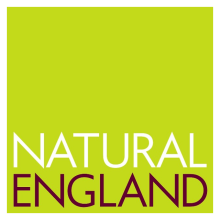Traditional orchards: Wildlife
Natural England Technical Information Note: TIN020
Traditional orchards are a haven for wildlife – simple management techniques can help increase populations of rare and priority species.
Resource explained
This note (one of a series) provides information on the ecological importance of traditional orchards and pointers on how to implement an orchard management plan that benefits a range of wildlife.
It contains a section on the ecological role of orchards in landscapes and gives details on how aging trees provide important habitats for a number of conservation priority species including insects, invertebrate, birds, small mammals, plants, fungus, mosses and lichens.
A section on management practices outlines how to maintain old trees, replant new trees to replenish stocks and clear climbers to manage light.
The note also provides information on the ecological importance and management of associated orchard habitats including hedgerows, the orchard floor and ponds.
A set of simple management techniques can support a wide range of wildlife in traditional orchards and this note will be useful for those seeking to increase wildlife in fruit or cobnut orchards.
Findings & recommendations
- Traditional fruit and nut orchards are important refuges for a wide range of wildlife.
- The key management principle for orchard wildlife conservation is to continue or reinstate low intensity management.
- Fruit trees produce veteran tree features when mature such as hollow trunks and split bark. These provide important refuges for a wide range of wildlife species; a number of which are conservation priorities under the national Biodiversity Action Plan (BAP).
- It is important to maintain a full age range of orchard trees within your orchard. Trees with veteran features provide the most important habitat, but younger trees help maintain continuity.
- It is important to manage your orchard as a whole. While trees are the most important habitat for wildlife, many species depend on a mosaic of habitats for food and shelter:
- Hedgerows of mixed shrub and height provide nesting sites for birds and nectar sources for pollinators and are easy to manage.
- Orchard floors with a variety of sward lengths provide opportunities for insects and invertebrate to find food and nest.
- Maintaining and strengthening links between orchards and habitats such as hedgerows and parkland is important for overall biodiversity, increasing wildlife populations, and adaption to climate change.
(Additional information about orchard planting and management can be found on the Orchard Network website).

